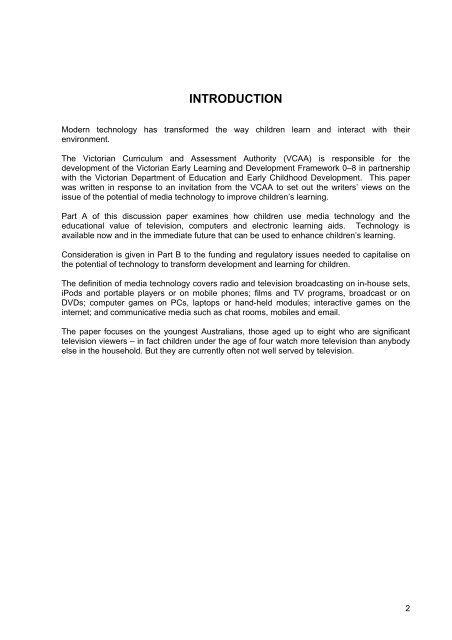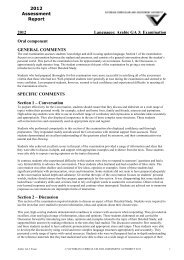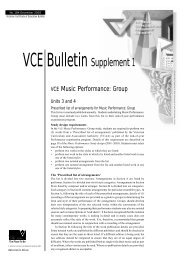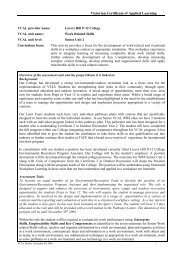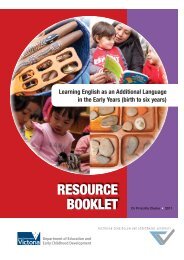television, digital media and children's learning - Victorian ...
television, digital media and children's learning - Victorian ...
television, digital media and children's learning - Victorian ...
You also want an ePaper? Increase the reach of your titles
YUMPU automatically turns print PDFs into web optimized ePapers that Google loves.
INTRODUCTION<br />
Modern technology has transformed the way children learn <strong>and</strong> interact with their<br />
environment.<br />
The <strong>Victorian</strong> Curriculum <strong>and</strong> Assessment Authority (VCAA) is responsible for the<br />
development of the <strong>Victorian</strong> Early Learning <strong>and</strong> Development Framework 0–8 in partnership<br />
with the <strong>Victorian</strong> Department of Education <strong>and</strong> Early Childhood Development. This paper<br />
was written in response to an invitation from the VCAA to set out the writers’ views on the<br />
issue of the potential of <strong>media</strong> technology to improve children’s <strong>learning</strong>.<br />
Part A of this discussion paper examines how children use <strong>media</strong> technology <strong>and</strong> the<br />
educational value of <strong>television</strong>, computers <strong>and</strong> electronic <strong>learning</strong> aids. Technology is<br />
available now <strong>and</strong> in the im<strong>media</strong>te future that can be used to enhance children’s <strong>learning</strong>.<br />
Consideration is given in Part B to the funding <strong>and</strong> regulatory issues needed to capitalise on<br />
the potential of technology to transform development <strong>and</strong> <strong>learning</strong> for children.<br />
The definition of <strong>media</strong> technology covers radio <strong>and</strong> <strong>television</strong> broadcasting on in-house sets,<br />
iPods <strong>and</strong> portable players or on mobile phones; films <strong>and</strong> TV programs, broadcast or on<br />
DVDs; computer games on PCs, laptops or h<strong>and</strong>-held modules; interactive games on the<br />
internet; <strong>and</strong> communicative <strong>media</strong> such as chat rooms, mobiles <strong>and</strong> email.<br />
The paper focuses on the youngest Australians, those aged up to eight who are significant<br />
<strong>television</strong> viewers – in fact children under the age of four watch more <strong>television</strong> than anybody<br />
else in the household. But they are currently often not well served by <strong>television</strong>.<br />
2


